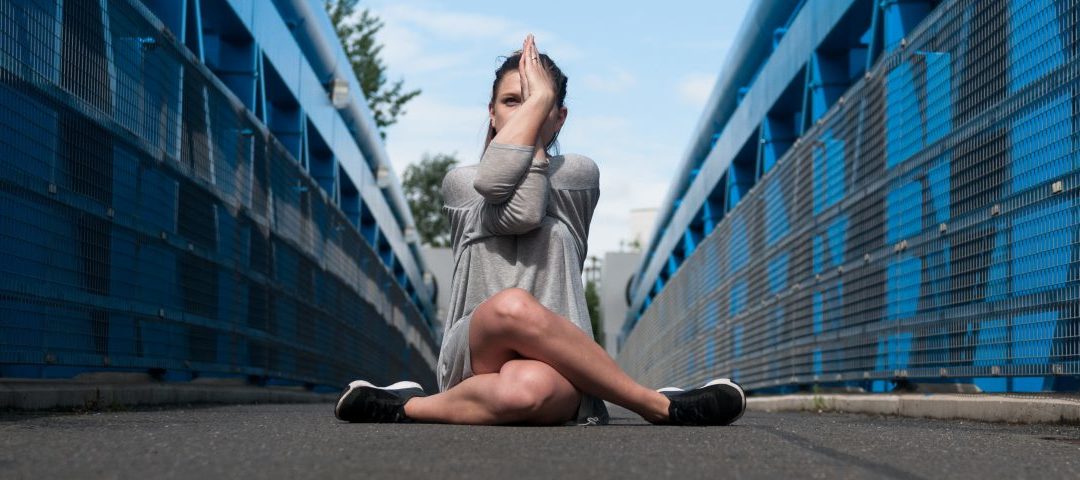This fusion of acrobatic principles and yoga asanas offers more than just movement
In this day and age where a new yoga style seems to be trending every month, it can be confusing to try to distinguish between sincere styles and simply fads. Sometimes a style can seem so off track it makes you wonder where the yoga aspects have gone.
Whilst you may think the fusion of acrobatics and yoga might seem an unlikely combination, I’ll shed a bit of light on the many similarities between the two and what this combination practice has to offer. When you hear the term acrobatics, you’ll be forgiven to think of circus, performance, and show-off. But when we take some of the principles of acrobatics such as working with gravity, trusting your partner, finding balance and counterbalance and seeing the world from a different perspective, we get a whole array of nourishing and nurturing approaches to yoga.
For ease, I’ve chosen the three aspects of this combination of acrobatics and yoga; AcroYoga, which I find specifically important and valuable.
Connection on a New Level
As you may have heard your yoga teachers utter during class, the essential meaning of yoga is union, to yoke. Uniting breath with movement, uniting our own actions and intentions with the world around us, and finding a more harmonious state between mind, body, and soul.
Whilst AcroYoga might seem like a purely aesthetically focused practice and one that which requires dexterity and athletic capabilities, I deeply believe that the practice is, essentially, all about connection. AcroYoga offers a place where all these components unite.
The importance of Trust in Acroyoga
Trust is a huge component of AcroYoga, you have to trust your partner (whether it’s a partner you already know well or someone you just partner up within a class situation) to take and give your weight. Touch is such an important part of human connection, but one that often gets misunderstood or misused.
In AcroYoga we use touch both between flyers and bases, and between spotters and the AcroYoga couple too. Touch is needed from a safety point of view, but it also adds a tactile, warm and sensorial way of getting to know another person.
Positive Communication
Communication is a hugely important part of AcroYoga; for moving safely and for enhancing one’s own kinaesthetic awareness in the best possible way. Communication happens between flyers, bases and spotters both via physical touch and via speaking. What many people don’t realise is that there’s so much to be gained from how we communicate in AcroYoga; asking for what you need or want, listening to your partner(s), and applying all of this in practice.
There is a skill to doing all of this in a positive way which encourages mutual respect and an attitude of ‘how can I help’ rather than blame and shame. This kind of communication feels hugely relevant to how, much of, the world is talking to each other off the mat. Perhaps if we all offered to listen to the people we communicate with and ask for their side of the story, before we talk and slip into judgment or criticism, a lot of conflicts could be avoided.
I always invite my students to take with them the principles of open, attentive communication with listening in focus, when they leave an AcroYoga session. We all know the value of applying yogic principles not just on the mat, but just as much (if not more so), in situations off the mat; from the teachings of Yamas and Niyamas to practicing mindfulness and meditation.
The principles of communication in AcroYoga are just as transferable and relatable to the rest of your life.
Tap Into your Creative Side
Lastly, AcroYoga is a wonderful outlet for creativity. Whilst AcroYoga is quite skills-based, once the basics of the foundation are kinaesthetically understood, there is so much scope for play, improvisation, creation and personal expression. This doesn’t have to be performed to be a valuable way to think and move outside of the box, and for fostering a sense of confidence.
AcroYoga has many aspects; from the physical side of training incorporating calisthenics, inversions and proper technique, to the meditative side of restorative therapeutics, to the more performative side of making sequences and refining the appearance of movement. Some prefer to work with one partner to refine calibration and kinetic understanding of each others’ movements, whilst others prefer working with lots of different people to make the practice challenging and more varied.
Both are equally valid, and offer great ways to think creatively about transitions, problem-solving, teamwork and performative features. Working more creatively is becoming more and more recognized and sought after, so even if you’re not planning on showing your AcroYoga practice to the world, the creative challenges it presents will help you to think more creatively outside of your practice.
Give it a Go – Fly and Flow
Whatever resonates, I urge you to have a try. Take your practice to new heights, move and see movement from a totally different perspective and discover doing things you never thought you would be able to.
AcroYogaDance offers great courses, workshops, intensives and teacher trainings in London, Bali and occasionally areas in between. Check out their website for more info and to find a course that suits your level of experience.
Find new ways to connect to your inner child and to your AcroYoga-partner, learn to communicate more efficiently and positively, and to release your creative side. Go fly.
